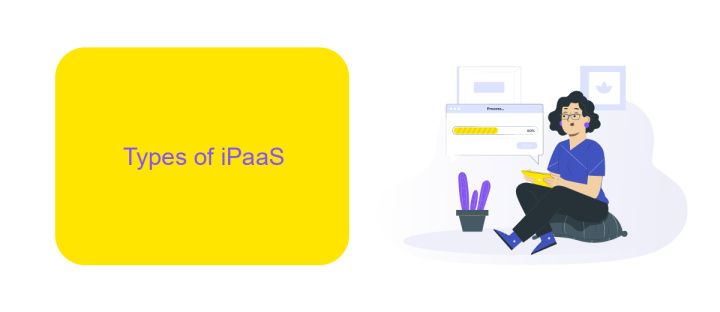iPaaS Course
In today's rapidly evolving digital landscape, businesses are increasingly turning to Integration Platform as a Service (iPaaS) solutions to streamline their operations and enhance connectivity. This iPaaS course is designed to equip you with the essential skills and knowledge to effectively integrate disparate systems, automate workflows, and drive innovation within your organization. Dive in and unlock the potential of seamless integration.
Introduction to iPaaS
Integration Platform as a Service (iPaaS) is a cloud-based solution that simplifies the integration of various applications and services. It enables businesses to connect disparate systems, automate workflows, and streamline data exchanges without the need for extensive coding knowledge. By leveraging iPaaS, organizations can achieve seamless communication between different software platforms, enhancing operational efficiency and reducing manual tasks.
- Automated data synchronization
- Real-time integration monitoring
- Scalability and flexibility
- Pre-built connectors for popular applications
One popular iPaaS solution is ApiX-Drive, which offers a user-friendly interface for setting up integrations quickly. ApiX-Drive provides a wide range of pre-built connectors, enabling users to link various services effortlessly. With features like automated data synchronization and real-time monitoring, ApiX-Drive helps businesses maintain smooth operations and improve overall productivity. By adopting iPaaS solutions like ApiX-Drive, companies can focus on their core activities while ensuring seamless data flow across their digital ecosystem.
Types of iPaaS

iPaaS (Integration Platform as a Service) solutions can be categorized into various types based on their functionality and use cases. One common type is the cloud-based iPaaS, which allows businesses to integrate multiple cloud applications seamlessly. These platforms offer high scalability and flexibility, making them ideal for organizations that rely heavily on cloud services. Another type is the hybrid iPaaS, which supports both cloud and on-premises integrations. This type is particularly useful for companies that need to maintain certain applications on-premises due to security or compliance requirements.
Additionally, some iPaaS solutions are designed for specific industries or use cases, offering tailored features to meet unique business needs. For instance, ApiX-Drive is an iPaaS service that simplifies the integration process by providing pre-built connectors and an intuitive interface. This allows businesses to set up integrations quickly without extensive technical knowledge. ApiX-Drive supports a wide range of applications, making it a versatile choice for various integration scenarios. Overall, understanding the different types of iPaaS solutions can help businesses choose the right platform to meet their integration needs efficiently.
Benefits and Use Cases of iPaaS

Integrating various applications and systems within a business can be a complex task, but an Integration Platform as a Service (iPaaS) simplifies this process. iPaaS offers numerous benefits, such as reducing the time and cost associated with manual integrations, enhancing data flow between systems, and improving overall operational efficiency. By providing a centralized platform for managing integrations, iPaaS helps businesses to streamline their workflows and focus on core activities.
- Seamless Data Integration: iPaaS facilitates real-time data exchange between disparate systems, ensuring that all applications are synchronized.
- Scalability: As businesses grow, iPaaS can easily scale to accommodate additional applications and increased data volumes.
- Improved Collaboration: By integrating various tools, iPaaS enhances collaboration across different departments within an organization.
- Cost Efficiency: iPaaS reduces the need for custom coding and maintenance, thereby lowering operational costs.
- Enhanced Security: iPaaS platforms typically offer robust security features to protect sensitive data during integrations.
One notable example of an iPaaS solution is ApiX-Drive, which allows users to seamlessly connect various applications without requiring extensive technical knowledge. This service simplifies the integration process, making it accessible for businesses of all sizes. By leveraging iPaaS solutions like ApiX-Drive, companies can achieve greater agility and responsiveness in their operations.
Choosing and Implementing an iPaaS

Choosing and implementing an iPaaS (Integration Platform as a Service) can be a transformative step for your organization. The first step is to identify your specific integration needs and objectives. Consider the types of applications you need to connect, data volume, and the frequency of data synchronization.
Once you have a clear understanding of your requirements, evaluate different iPaaS solutions based on their features, scalability, and ease of use. ApiX-Drive is a robust option that offers a wide range of pre-built connectors and user-friendly interface, making it easier to set up integrations without extensive coding knowledge.
- Assess your current IT infrastructure and integration needs.
- Research and compare iPaaS providers.
- Consider the cost and scalability of the solution.
- Check for user reviews and case studies.
- Test the platform with a pilot project.
After selecting an iPaaS, the implementation process involves configuring the necessary connectors and workflows. Platforms like ApiX-Drive simplify this process by providing intuitive tools and support. Ensure to monitor the integrations regularly to maintain optimal performance and address any issues promptly.
Best Practices for iPaaS Success
Implementing an iPaaS solution requires careful planning and execution to ensure seamless integration across various platforms. Start by clearly defining your integration goals and requirements. Identify the key applications and data sources that need to be connected. Choose an iPaaS provider that offers robust features and scalability, such as ApiX-Drive, which simplifies the integration process with its user-friendly interface and pre-built connectors. Conduct thorough testing to ensure data flows smoothly between systems and address any potential issues early on.
Effective monitoring and maintenance are crucial for iPaaS success. Regularly review and update your integrations to accommodate changes in business processes and technology. Utilize the monitoring tools provided by your iPaaS provider to track performance and identify any bottlenecks or failures. ApiX-Drive, for instance, offers real-time monitoring and alerts to help you stay on top of your integrations. Additionally, provide adequate training for your team to ensure they are proficient in managing and troubleshooting the iPaaS platform. Continuous improvement and adaptation will help you maximize the benefits of your iPaaS solution.


FAQ
What is iPaaS?
Who can benefit from an iPaaS course?
What are the key components of an iPaaS?
How does iPaaS differ from traditional integration methods?
Can iPaaS be used for both small and large businesses?
Routine tasks take a lot of time from employees? Do they burn out, do not have enough working day for the main duties and important things? Do you understand that the only way out of this situation in modern realities is automation? Try Apix-Drive for free and make sure that the online connector in 5 minutes of setting up integration will remove a significant part of the routine from your life and free up time for you and your employees.

